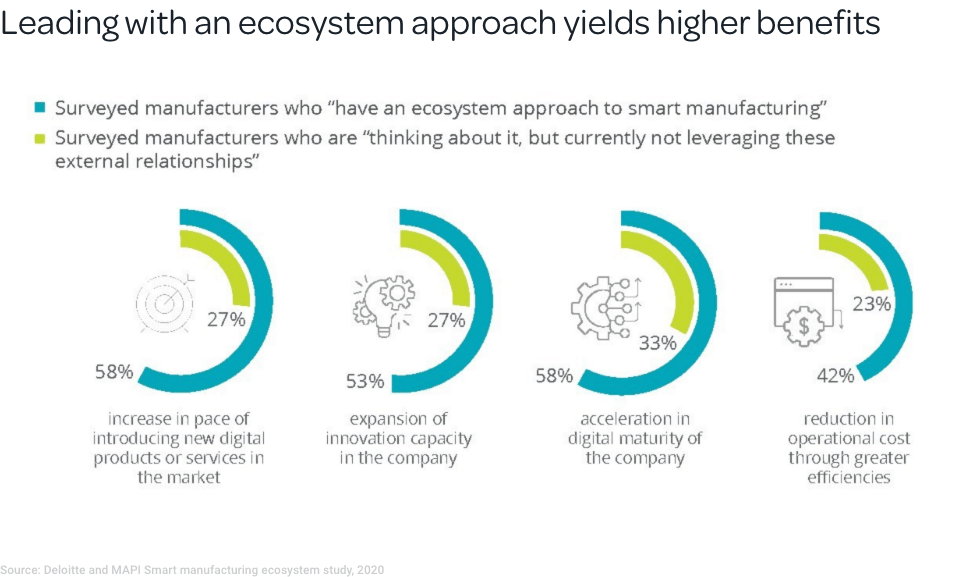The evolution of Artificial Intelligence (AI) in manufacturing hasn’t come from one company working in isolation. For successful integration of AI and machine learning, manufacturing leaders must be willing to work with a wider ecosystem of technologies, data and vendor partnerships.
Rather than trying to build the supporting technology themselves, manufacturing companies will need to work in well-planned collaborations within the industrial equipment sector, with integrators, industry software vendors, and other partners.
Machine learning and AI are integral to the Factory of the Future. A connected ecosystem is paramount to support this evolution.
Why Do Manufacturers Need a Partner Ecosystem?
Ecosystem collaboration ensures that the data is integrated and hardware is connected so that machine learning can take place. It also sets the stage for the core algorithm development which is crucial in AI applications.
What are the challenges of going it alone? How can we ensure that developments in state-of-the-art IIoT technologies occur collaboratively across industries and not in isolated silos?
Building an AI-ready manufacturing ecosystem for the Factory of the Future requires companies, thought-leaders, governments, and regulatory bodies to work together to advance Industry 4.0 toward a sustainable future.

Key Partnerships for Factory of the Future Ecosystems
Partnerships fuel innovation. A collaborative spirit – pooling together a diverse range of competencies – can truly generate unexpected and inventive results.
The ideal, smart connected Factory of the Future ecosystem is well within reach if the right partnerships are developed and open, transparent relationships are forged.

Factors for Successful Manufacturing Ecosystems
Our approach to ecosystems is using best of breed software and systems that are open and flexible. Constantly evolving, this method reduces risk – moving toward a low-code, no-code ecosystem that’s plug and play.
1. Security considerations
Finding trusted partners who share your company’s vision of an end-to-end factory of the future manufacturing ecosystem is the most important step towards success.
Of course, working with external partners poses potential security risks. Finding and vetting valued partnerships is vital in setting up long term collaborations.
Learn data management best practices →
2. Best in class
Collaborations built on quality of work, not necessarily name recognition, can enable businesses to combine specific, niche competencies. Selecting a boutique supplier instead of the largest in the industry might help each partner grow their own future factory, while contributing to a wider push forward for AI ecosystems in general.
Start-ups with focus on specific production processes or software offer great collaborative value as they’re committed to finding targeted solutions in their unique area of competence and expertise.
3. Plug and Play
Quick set up, easy installation and intuitive product integration facilitate data exchange and data architecture across an AI ecosystem.
LineView’s LV Connector, for example, uses APIs, OPC and PLC Direct Drivers to connect with third party MES, maintenance and alert systems to better monitor events. It allows for easy configuration of how and when messages are relayed to your desired endpoint API.
